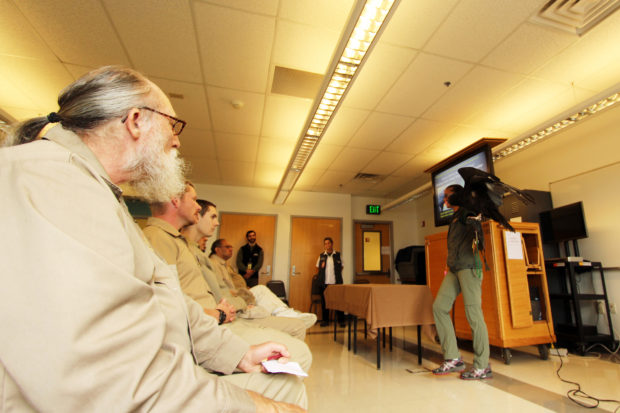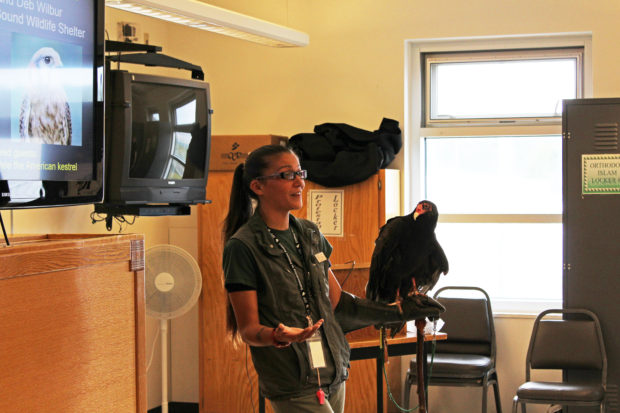Co-Authored by Western Pond Turtle Technicians Taylour Eldridge and William Anglemyer
On Monday October 3rd, turtle 4176 was released from the Turtle Rehabilitation program at Cedar Creek Corrections Center . She had been there for quite some time—about 4 months, with a month long intermission at PAWS wildlife rehabilitation center in Lynnwood, WA—then back for another 4 months. She had suffered from seizure-like episodes and for awhile it looked like she wouldn’t be deemed releasable back into the wild. We had been worried, as people who have spent time in solitary confinement ourselves, that months in captivity would have a detrimental effect on her. So it was a great relief to finally load her into a container and board a van destined to deliver her to the Lakewood Western Pond Turtle Refuge.

Turtle Technicians, Mr. Anglemyer and Mr. Eldridge, getting ready to release turtle 4176. Photo by Sadie Gilliom.
When we arrived, we were met by Washington State Fish and Wildlife Biologist, Emily Butler. In addition to facilitating the turtle release, Ms. Butler showed us how the radio telemetry transmitters are attached to the turtles. We were then given a training on how to use the radio receivers and Ms. Butler took us to the area where the turtles lay their nests. She had hidden two mock (plastic) turtles with transmitters attached to the shells. We took turns using the radio receiver and the attached antenna to find the plastic turtles. We both found it quite difficult; it’s not even close to easy to use the radio telemetry equipment. But we were eventually successful in locating them–truthfully, we received some visual hints. We have a new-found respect for anyone who has to attempt to find turtle nests in this manner.

Technician, Mr. Eldridge, learning to use the radio telemetry equipment. Photo by Sadie Gilliom.
Apart from the experience making us much more aware of the very difficult work of finding nests, it was a great learning experience which gave us a new found appreciation for the hands-on work that goes on in the field—a part of the program we’d never been privy to before. We learned of the plethora of other activities that the biologists do every day to help with the recovery of this amazing species.
We both feel good about being part of the SPP Western Pond Turtle Rehabilitation Program and we cannot think of a more worthwhile job—especially as people in an incarceration setting. We’re looking forward to helping the next batch of turtles get through their healing process and seeing them released back into the wild. We hope the day will come soon when there are no more turtles that need help healing. Hopefully, the future will bring multitudes of healthy turtles living in their natural habitat.
















































